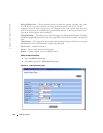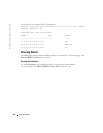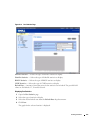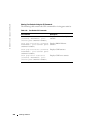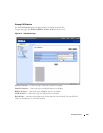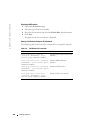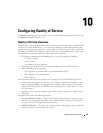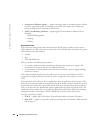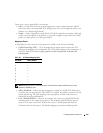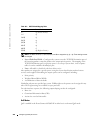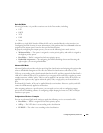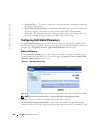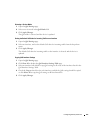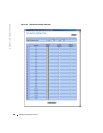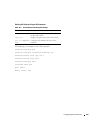
422 Configuring Quality of Service
www.dell.com | support.dell.com
•
Assignment to Hardware Queues
— Assigns incoming packets to forwarding queues. Packets
are sent to a particular queue for handling as a function of the traffic class to which they
belong, as defined by the classification mechanism.
•
Traffic Class-Handling Attributes
— Applies QoS/CoS mechanisms to different classes,
including:
– Bandwidth Management
– Shaping
– Policing
Access Control Lists
ACLs inspect incoming packets and classify them into logical groups, based on various criteria.
ACL groups have specific actions that are carried out on every packet that is classified to the group.
ACLs enable actions which include:
•Forward
•Deny
• Deny and disable port
ACLs are used for the following main purposes:
• As a security mechanism, either permitting or denying entry to packets in a group. This
mechanism is described in the section on Network Security.
• As a mechanism to classify packets into traffic classes for which various CoS/QoS handling
actions are executed.
ACLs contain multiple classification rules and actions. An Access Control Element (ACE) is
composed of a single classification rule and its action. A single ACL may contain one or more
ACEs.
The order of the ACEs within an ACL is important, as they are applied in a first-fit manner. The
ACEs are processed sequentially, starting with the first ACE. When a packet is matched to an ACE
classification, the ACE action is performed and the ACL processing terminates. If more than one
ACL is to be processed, the default drop action is applied only after processing all the ACLs. The
default drop action requires the user to explicitly allow all the traffic that is permitted, including
management traffic, such as telnet, HTTP, or SNMP that is directed to the router itself.
Two types of ACLs are defined:
•
IP ACL
— Applies only to IP packets. All classification fields are related to IP packets.
•
MAC ACL
— Applies to any packet, including non-IP packets. Classification fields are based
only on Layer 2.



